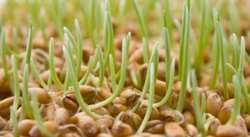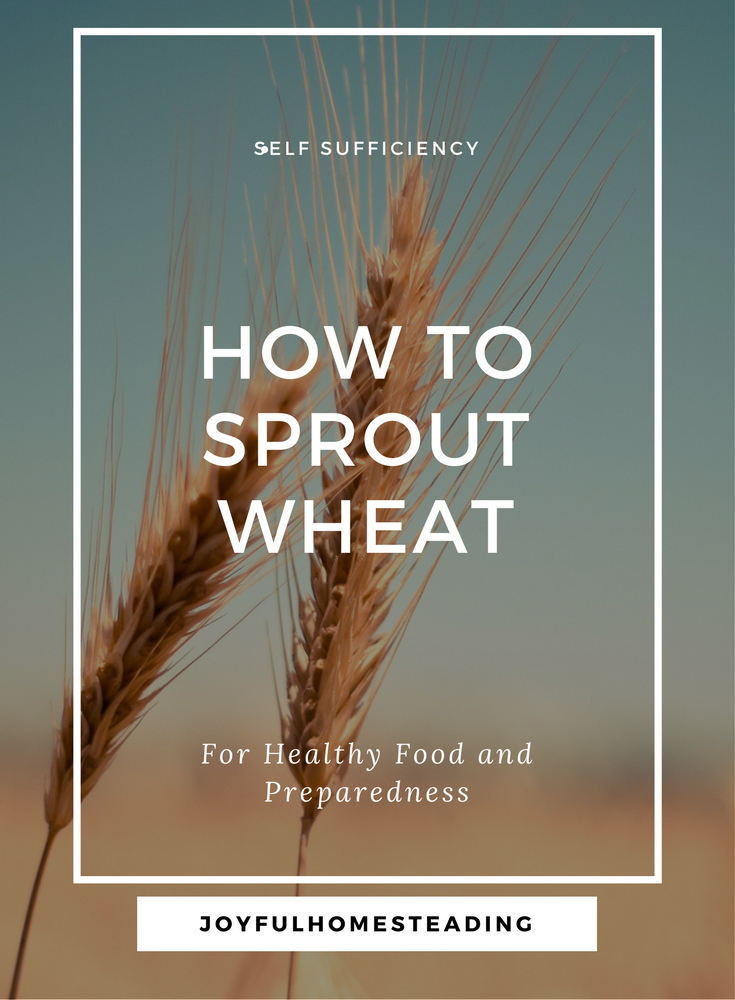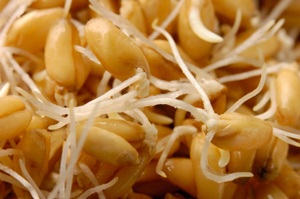Sprouting Wheat Berries for Excellent Nutrition
Sprouting wheat berries and other seeds provides you with a ton of nutrients in a small, green package. Learn how to grow sprouts, and you have the best supply of nutrients available for you and your family. Plus, the ability to grow sprouts from beans or wheat is a boon in an emergency. All you need to have on hand is a jar, a rubber band, an old pair of panty hose and some wheat berries or beans.

You can grow sprouts from beans and grains such as wheat.
Best of all, they don't have to be special beans or grains. Any type of bean will do, including pinto beans, kidney beans, lentils and, of course, wheat berries. This is a great source of fresh vegetables if all you have in your emergency supply is wheat and water. Make sure you have a good supply of these two valuable items on hand, and you are truly set.

Sprouting Wheat Berries and Beans Why is This Knowledge Important?
Sprouting wheat berries and beans provides your family with a ton of nutrients in a small, green package. A plant's sprout has more nourishment in it than at any other time in a plant's lifespan. Not only are they loaded with vitamins, minerals and amino acids, they also contain enzymes that help with digestion and provide you with fiber.
How Do You Use Sprouts?
Once you have finished sprouting wheat berries and other beans, enjoy them in salads, sandwiches or soups. Or add them to casseroles. You can also steam them or add them to your stir fry.
Great in an Emergency
You don't need electricity - or any other kind of energy - to grow sprouts. Grow sprouts from wheat berries during a power outage, and you can eat them without cooking them. You don't need soil or fertilizer to grow sprouts, either. All you need is a little water.

The Best "Fast Food"
Sprouts are ready to eat within three days after you start them.
How Long Should You Let Them Grow?
Generally, you should eat your sprouts after they have been growing about three days. After about five days, they become plants and will taste bitter.
What You Need For Sprouting Wheat Berries and other Beans
- A quart jar
- A piece of cotton fabric, gauze, nylon or pantyhose top
- A strong rubber band
To Grow Sprouts
Measure out your seeds and place them in a jar that is filled half-way with warm water.
Place the fabric or gauze on top of the jar and hold it in place with a rubber band.
Allow your beans or seeds to soak for six to eight hours (or eight to twelve hours if it is wheat) in a warm location.
Then drain your seeds by turning the jar upside down and allowing the water to pour out.
Set the jar upside down, and at an angle in your sink or dish drainer for a few minutes.
Gently rinse your seeds again in warm water.
Allow your jar to drain once more and place the jar in a warm spot away from the light.
If necessary, cover the jar with a dark towel.
Drain and rinse your seeds 2-3 times each day.
Make sure you drain it well to keep your seeds from souring.
After about three days, your sprouts will be ready to eat.
What Seeds Can You Sprout?
You can grow sprouts from virtually anything, including beans, wheat, lentils and even radish seeds.
But...
Don't sprout tomato or potato seeds. These are toxic. Also steam lentil, kidney, mung and other bean sprouts before eating to remove the toxins.
Sprouting Wheat Berries
Take one cup of wheat berries and soak them for 8-12 hours. Allow them to sprout for three to six days or until they are seed length.
To Grow Sprouts From Lentils
Put 2/3 of a cup of lentils into the jar and allow them to soak for six to twelve hours. Allow them to sprout for two to four days or until they are one quarter inch to one inch long. Steam them lightly to remove toxins before eating.
To Grow Sprouts From Pinto Beans
Put 1 cup of beans into the jar and allow them to soak for eight to twelve hours. Let them sprout for three to four days or until they are 1/2 inch to 1 1/4 inch in length. Steam them for 10-15 minutes prior to eating to destroy the toxins in the beans.
To Grow Sprouts From Kidney Beans
Put 3/4 cup of beans into the jar and allow them to soak for 8 to twelve hours. Let them sprout for two to four days until they are 1/2 to 1 inch long. Again, steam the sprouts before eating to destroy the toxins.







New! Comments
Have your say about what you just read! Leave me a comment in the box below.